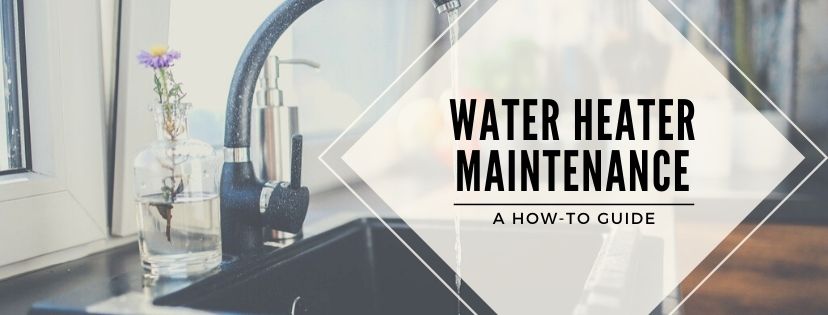[et_pb_section bb_built=”1″ fullwidth=”off” specialty=”off” next_background_color=”#000000″][et_pb_row background_position=”top_left” background_repeat=”repeat” background_size=”initial”][et_pb_column type=”4_4″][et_pb_image src=”https://assets.agentfire3.com/uploads/sites/577/sites/888/2020/11/Water-Heater-MaintenanceFB.jpg” align=”center” use_border_color=”off” animation_style=”fade” animation_duration=”500ms” animation_intensity_slide=”10%” _builder_version=”3.19.1″ /][et_pb_text use_border_color=”off” background_position=”top_left” background_repeat=”repeat” background_size=”initial” _builder_version=”3.19.1″]
Home maintenance is an important part of protecting your investment in your new home. But I have to admit, maintaining the water heater is one of those items that I tend to ignore. So when I found out that water heaters account for 17% of your total household energy expenditure, I decided to focus a little more attention on it.
Here’s what you should look for during the home buying process, and why you should add “flush the water heater” to your annual maintenance list.
Water Heater Inspection – Part of the home buying process
If you’re buying a home, the water heater inspection will be part of the home inspection process.
Your home inspector will check:
- Water heater age. Water heaters typically last from 10 to 15 years until
they need a replacement. There’s a manufacture date sticker on the
tank. - Flue pipe condition. The flue pipe vents gases from a gas water
heater. Rust can indicate that the heater isn’t running efficiently. - Pressure valve. The temperature and pressure valve is the early
warning system if something is going wrong with the water heater. - Installed per code. An improperly installed water heater can be
dangerous. If the water heater is in your garage, it must be elevated off
the garage floor. And, certain types of piping are required. - Sound. By simply knocking on the side of the water heater tank, your
inspector will be able to tell if there are mineral deposits built up in the
tank.
If the water heater in the home needs to be replaced, that’s one of the bargaining items you can use to request a lower sale price. Or, you can request that the seller replace the water heater prior to closing. But once the house is yours, it’s up to you to maintain it. Which brings us to our next issue…
Water Heater Maintenance – How to Flush Your Water Heater
Once you are a home owner, you’ll want to put “flush the water heater” on your annual maintenance list.
First, what does it mean to flush the water heater? It means to drain the tank and flush out any debris inside. And second, how does debris get inside the tank? From the water itself. Calcium and magnesium in the water can cause calcium carbonite or lime scale to build up in your water heater. The sediment can become almost like gravel in the bottom of your water heater. That makes your water heater work overtime.
Luckily, Georgia water is considered soft water, and Atlanta water is very soft water, with a low level of minerals in the water. That means it’s less likely that you’ll have sediment in your tank. But you should still flush it annually to extend its life!
Here’s a step-by-step on how to flush your water heater. (Prefer the visual approach? Here’s a great video I found.)
1. Turn off the water heater. Turn the thermostat knob to off. If you have a gas water heater, it may have a “pilot” setting.
2. Turn off the power or gas supply. Either turn off the breaker for your electric water heater, or use the shut off valve on the gas line.
3. Turn off the cold water supply faucet
4. Let the water in your tank cool before proceeding.
5. Enter your home and turn on the hot water to drain the pipes. Turn the hot water on in two points, such as a sink and a tub. That will prevent a vacuum from forming in the water lines while you are draining the water tank.
6. Connect a garden hose to the drain valve on the water tank. You’ll find the drain valve on the side of the tank, near the bottom. Connect the hose to the tank. Then make sure the other end of the hose leads outside or to a drain.
7. Turn on the drain valve and drain the water tank. Drain the tank until the water runs clear. You may need to only drain ¼ to ½ of your tank.
8. Flush the tank with cold water. If you have a lot of sediment, you may need to completely drain the tank, then flush the tank by turning on the cold water spigot. Let it run a few minutes, until clear water exits the drain hose.
When you’re done, reverse the process and turn your water tank back on. If you have a gas water heater you’ll need to relight the pilot light too. If flushing your water heater seems out of your skill set (or is just something you prefer not to do), you can contact a local plumber to perform this task for you.
Best Energy Efficient Setting for Your Water Heater
Now that your water heater is in top working order, what’s the best temperature setting? According to NaturalGasPlans.com, the best temperature setting for your water heater is 120 degrees Fahrenheit, whether your water heater is gas or electric. In a traditional water heater, the system works around the clock to maintain the water temperature. That way hot water is always available when you want it. If you set the temperature above 120 degrees, you’ll use more energy to heat the water, and your electricity or gas bill will increase.
I don’t know about you, but I love a steamy hot bath on a cold winter day. Now that I know how to flush my water heater, I know that I’ll have lots of hot water to use!
[/et_pb_text][/et_pb_column][/et_pb_row][/et_pb_section][et_pb_section bb_built=”1″ fullwidth=”on” specialty=”off” prev_background_color=”#000000″][/et_pb_section]



